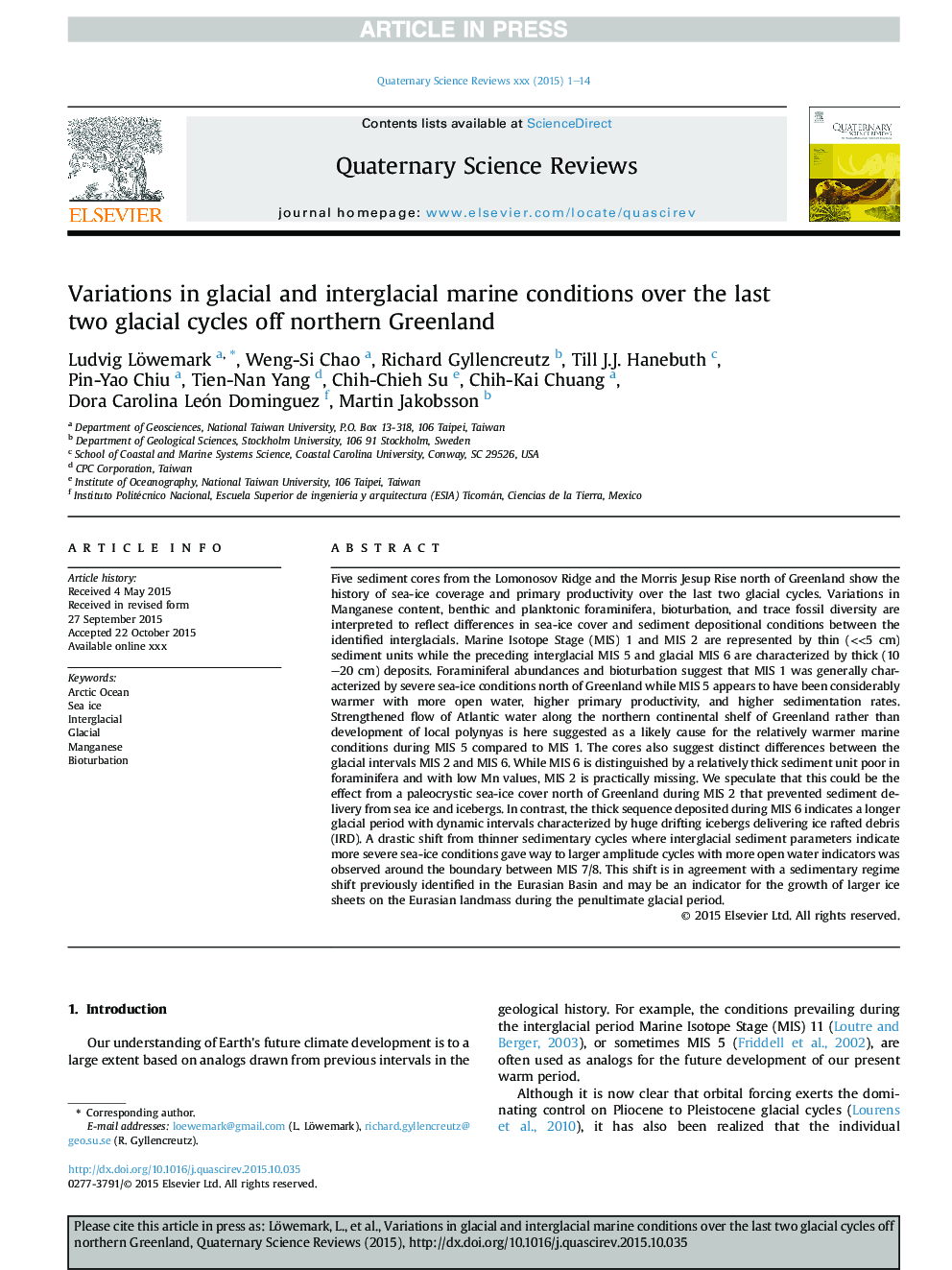| کد مقاله | کد نشریه | سال انتشار | مقاله انگلیسی | نسخه تمام متن |
|---|---|---|---|---|
| 6446453 | 1640788 | 2016 | 14 صفحه PDF | دانلود رایگان |
عنوان انگلیسی مقاله ISI
Variations in glacial and interglacial marine conditions over the last two glacial cycles off northern Greenland
ترجمه فارسی عنوان
تغییرات در شرایط دریایی یخبندان و بین دریایی در طول دو دوره یک دوره یک یخچال از شمال گرینلند
دانلود مقاله + سفارش ترجمه
دانلود مقاله ISI انگلیسی
رایگان برای ایرانیان
کلمات کلیدی
اقیانوس قطب شمال، یخ دریایی، فاصله بین یخبندان، منگنز، بیوتروبیک،
موضوعات مرتبط
مهندسی و علوم پایه
علوم زمین و سیارات
زمین شناسی
چکیده انگلیسی
Five sediment cores from the Lomonosov Ridge and the Morris Jesup Rise north of Greenland show the history of sea-ice coverage and primary productivity over the last two glacial cycles. Variations in Manganese content, benthic and planktonic foraminifera, bioturbation, and trace fossil diversity are interpreted to reflect differences in sea-ice cover and sediment depositional conditions between the identified interglacials. Marine Isotope Stage (MIS) 1 and MIS 2 are represented by thin (<<5Â cm) sediment units while the preceding interglacial MIS 5 and glacial MIS 6 are characterized by thick (10-20Â cm) deposits. Foraminiferal abundances and bioturbation suggest that MIS 1 was generally characterized by severe sea-ice conditions north of Greenland while MIS 5 appears to have been considerably warmer with more open water, higher primary productivity, and higher sedimentation rates. Strengthened flow of Atlantic water along the northern continental shelf of Greenland rather than development of local polynyas is here suggested as a likely cause for the relatively warmer marine conditions during MIS 5 compared to MIS 1. The cores also suggest distinct differences between the glacial intervals MIS 2 and MIS 6. While MIS 6 is distinguished by a relatively thick sediment unit poor in foraminifera and with low Mn values, MIS 2 is practically missing. We speculate that this could be the effect from a paleocrystic sea-ice cover north of Greenland during MIS 2 that prevented sediment delivery from sea ice and icebergs. In contrast, the thick sequence deposited during MIS 6 indicates a longer glacial period with dynamic intervals characterized by huge drifting icebergs delivering ice rafted debris (IRD). A drastic shift from thinner sedimentary cycles where interglacial sediment parameters indicate more severe sea-ice conditions gave way to larger amplitude cycles with more open water indicators was observed around the boundary between MIS 7/8. This shift is in agreement with a sedimentary regime shift previously identified in the Eurasian Basin and may be an indicator for the growth of larger ice sheets on the Eurasian landmass during the penultimate glacial period.
ناشر
Database: Elsevier - ScienceDirect (ساینس دایرکت)
Journal: Quaternary Science Reviews - Volume 147, 1 September 2016, Pages 164-177
Journal: Quaternary Science Reviews - Volume 147, 1 September 2016, Pages 164-177
نویسندگان
Ludvig Löwemark, Weng-Si Chao, Richard Gyllencreutz, Till J.J. Hanebuth, Pin-Yao Chiu, Tien-Nan Yang, Chih-Chieh Su, Chih-Kai Chuang, Dora Carolina León Dominguez, Martin Jakobsson,
